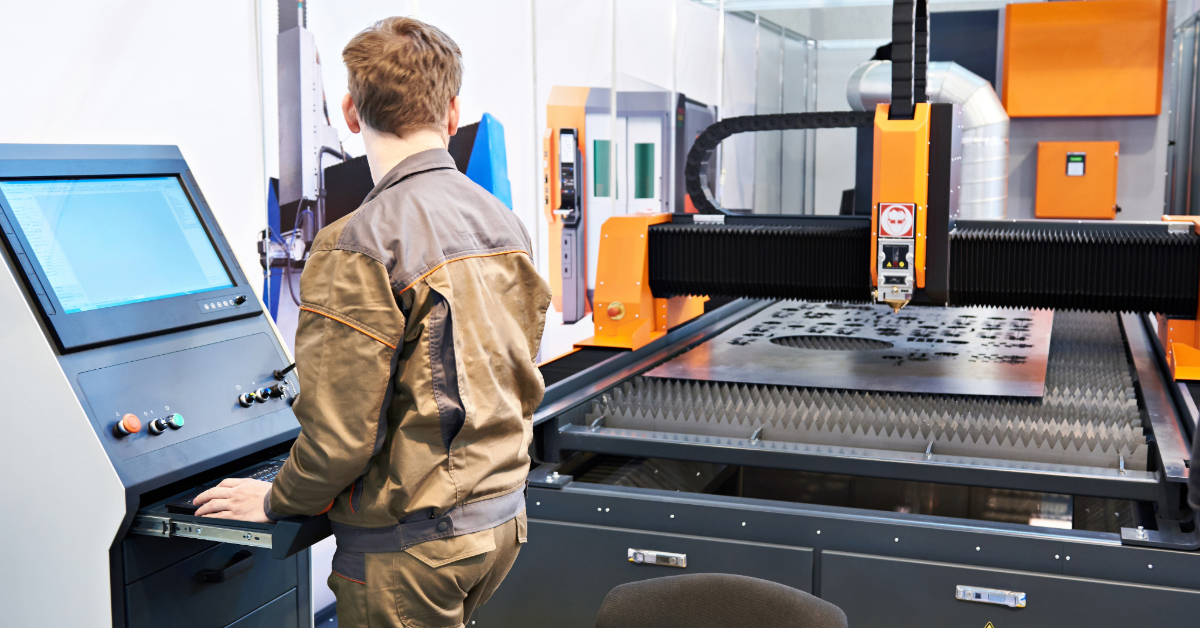Key Takeaways
- Enhance your competitive edge by leveraging laser cutting technology to create unique, precision-crafted products that differentiate your business from competitors.
- Implement laser cutting by assessing your business needs, choosing the right machine or service provider, optimizing designs for laser compatibility, and integrating it with digital design tools for seamless production.
- Transform your business’s impact by using laser cutting to offer personalized products that resonate with customers, fostering a deeper connection and contributing to a more sustainable manufacturing process.
- Discover the exciting possibilities of laser cutting by exploring its versatility across various materials and industries, from fashion to manufacturing, and uncover how it can revolutionize your product development process.
In today’s competitive market, businesses are constantly looking for innovative ways to expand their product offerings.
What is Laser Cutting?
Laser cutting is a technology that uses a high-powered laser beam from a laser cutter to cut or engrave materials with extreme accuracy. It is widely used in various industries due to its ability to handle different materials and produce complex designs with minimal effort.
Types of Laser Cutting Machines:
- CO₂ Laser: Best for cutting non-metal materials like wood, acrylic, fabric, and plastic.
- Fiber Laser: Primarily used for cutting metals such as steel, aluminum, and brass.
- YAG Laser: Suitable for engraving and marking metals and plastics.
Compared to traditional cutting methods, laser cutting offers a cleaner, faster, and more precise alternative, making it an excellent choice for businesses looking to expand their product lines.
The Advantages of Laser Cutting for Product Development
Precision and Complexity
Laser cutting allows businesses to create highly intricate and detailed designs that would be difficult or impossible to achieve with manual cutting tools. This is particularly beneficial for industries requiring fine detailing, such as jewelry, electronics, and custom signage.
Material Versatility
One of the biggest advantages of laser cutting is its ability to work with a wide range of materials, including:
- Metals (stainless steel, aluminum, brass)
- Plastics and acrylic
- Wood and MDF
- Leather and fabric
- Glass and ceramics
This flexibility enables businesses to experiment with new product ideas and cater to diverse customer needs.
Speed and Efficiency
Laser cutting machines operate quickly and with minimal waste, improving production efficiency. Unlike traditional methods, which may require multiple steps, laser cutting often completes the process in a single pass, reducing labor costs and turnaround times.
Customization and Personalization
With increasing demand for personalized products, laser cutting allows businesses to offer unique, custom-made items. Whether it’s engraving names on gifts, creating custom metal parts, or producing one-of-a-kind home décor, the possibilities are endless.
Industries Benefiting from Laser Cutting for Product Expansion
Laser cutting is widely used across multiple industries, helping businesses innovate and diversify their product lines.
Manufacturing
- Custom metal and plastic parts
- Prototyping and small-batch production
- Precise industrial components
Retail & E-commerce
- Personalized jewelry and accessories
- Custom-engraved gifts and home décor
- Acrylic and wood-crafted items
Automotive
- Precision-cut metal parts
- Custom modifications and branding elements
Fashion & Textiles
- Laser-cut lace and fabric patterns
- Custom leather designs
Signage & Advertising
- High-precision business signage
- Custom branding elements for stores and events
By leveraging laser cutting, businesses in these industries can expand their product range, increase customer engagement, and differentiate themselves from competitors.
How Laser Cutting Encourages Innovation and Scalability
Rapid Prototyping at Low Cost
Laser cutting is an excellent tool for prototyping new products without the high costs of traditional manufacturing methods. Businesses can create test models, refine their designs, and make necessary modifications before committing to mass production.
Small-Batch and On-Demand Production
Instead of maintaining large inventories, businesses can produce items on demand. This reduces storage costs and allows for more flexibility in responding to customer trends and preferences.
Integration with Digital Design
Laser cutting can be integrated with digital design software such as AutoCAD, CorelDRAW, and Adobe Illustrator. This enables seamless production of complex patterns and allows businesses to easily modify designs as needed.
Steps to Incorporate Laser Cutting into Your Business
Step 1: Assess Your Needs
Determine how laser cutting can enhance your existing product line. Identify materials and designs that could benefit from this technology.
Step 2: Choose the Right Laser Cutting Machine
If you plan to bring laser cutting in-house, consider factors such as power, material compatibility, and cost. Alternatively, outsourcing to a laser cutting service provider can be a cost-effective option for smaller businesses. For businesses looking to bring laser cutting in-house, OMTech laser machines offer excellent options that balance power, precision, and cost-effectiveness. With a range of models designed for various materials and applications, OMTech provides versatile solutions for both small businesses and larger operations.
Step 3: Design Considerations
Ensure your product designs are optimized for laser cutting. This includes choosing the right file formats, adjusting material thickness, and selecting appropriate laser settings.
Step 4: Find a Reliable Manufacturing Partner
If you’re not investing in your own machine, partnering with a professional laser cutting service can help you scale production efficiently. Look for providers with experience in your industry.
Step 5: Market Your New Products
Highlight the benefits of laser-cut products in your marketing. Emphasize precision, customization, and sustainability in your product descriptions and promotional campaigns.
Conclusion
Laser cutting is revolutionizing the way businesses design and manufacture products. With its ability to create intricate designs, work with multiple materials, and streamline production, it opens up endless opportunities for expansion. If you’re looking to innovate and scale your product line, now is the time to explore laser cutting technology. Whether you invest in a laser cutting machine or collaborate with a service provider, embracing this technology can set your business apart and drive long-term growth.




